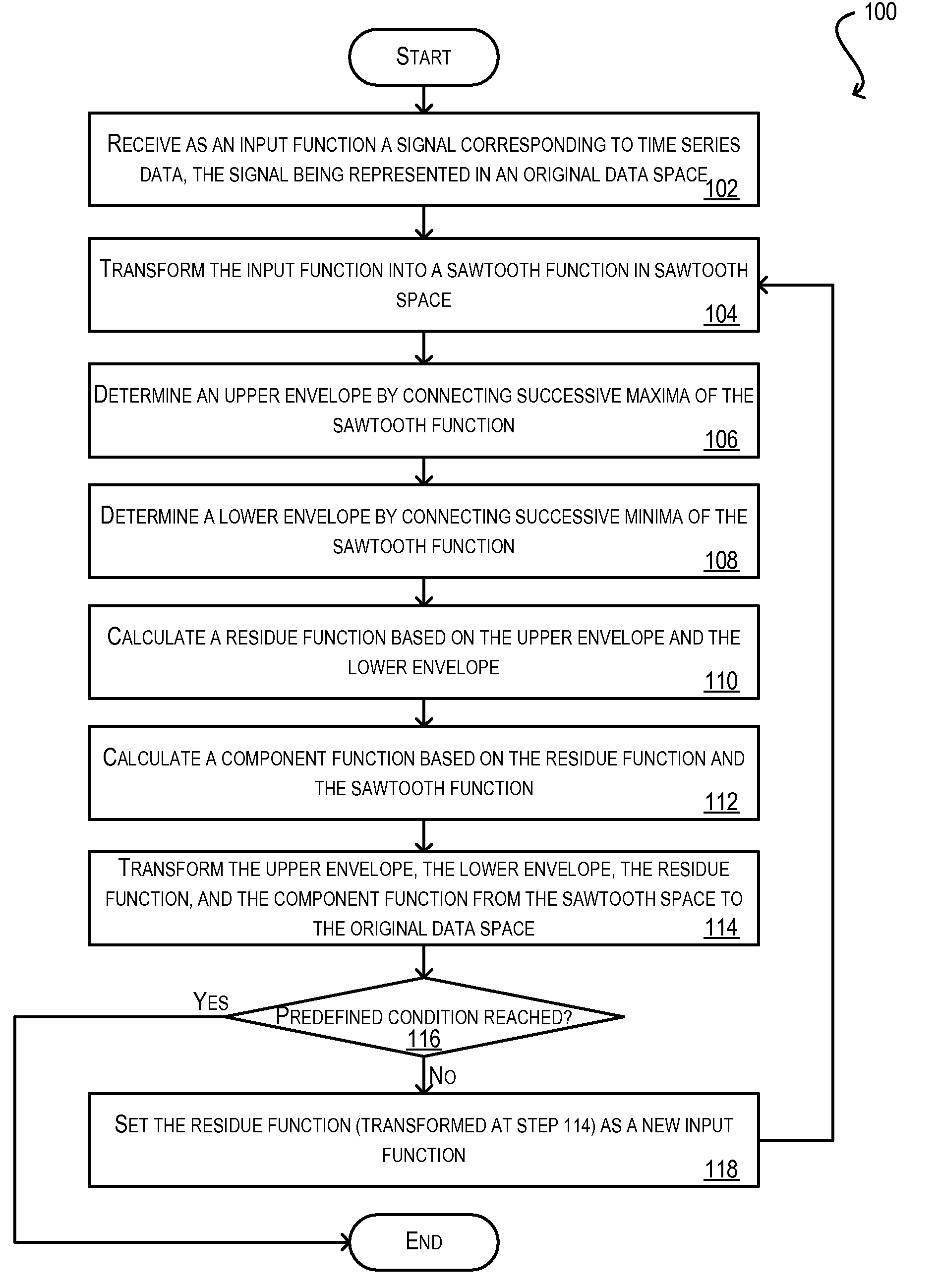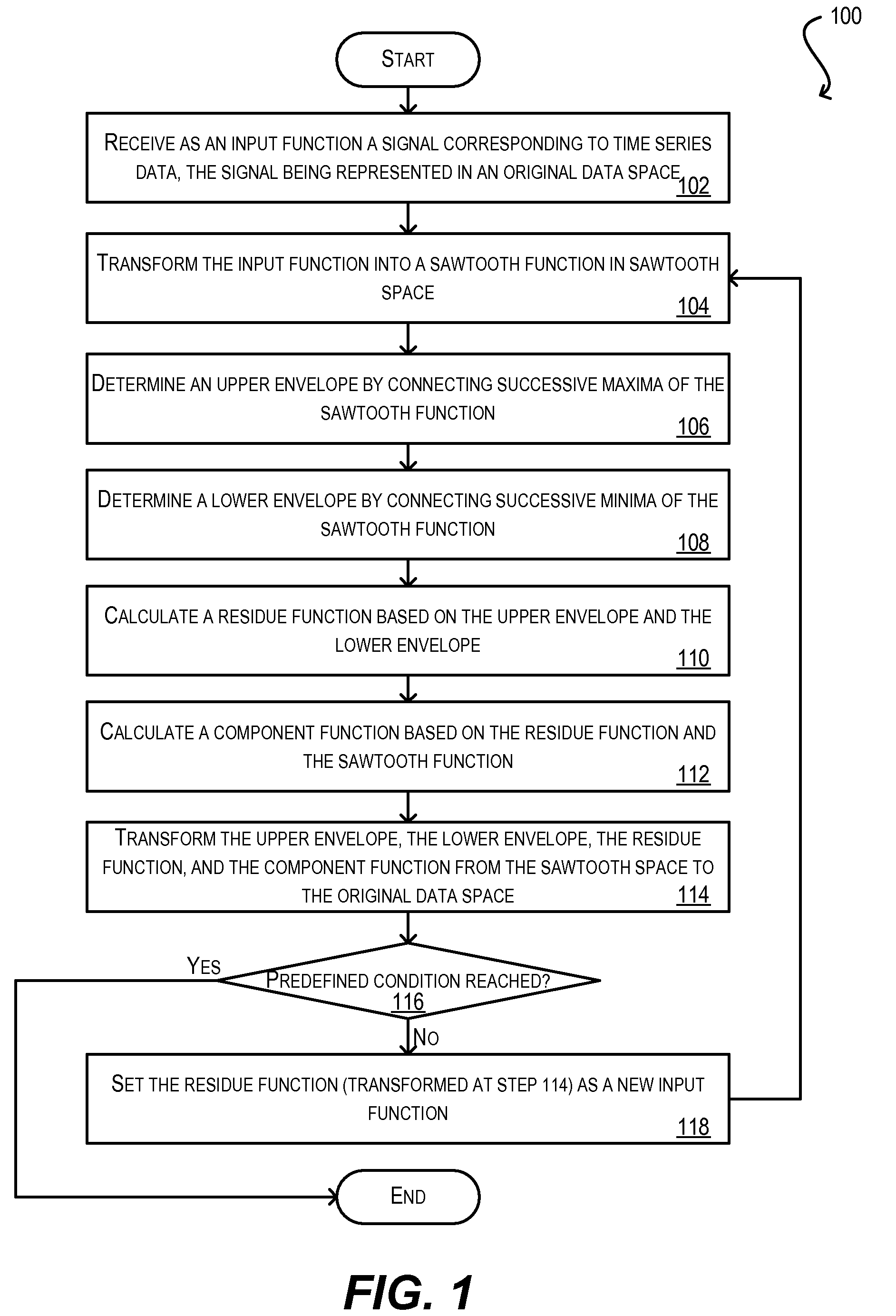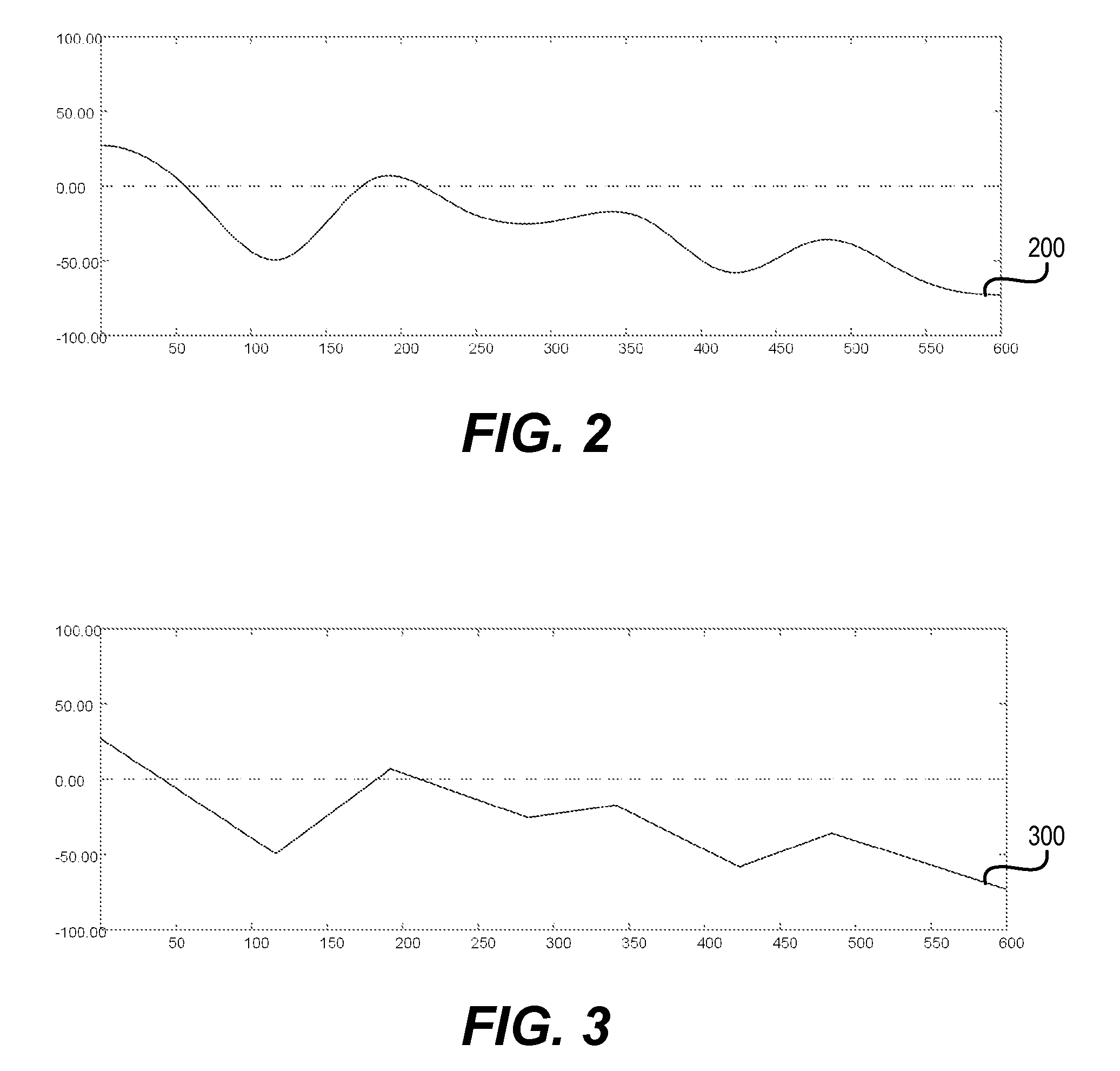Fast intrinsic mode decomposition of time series data with sawtooth transform
a time series data and intrinsic mode technology, applied in the field of data processing, can solve the problems of inability to analyze these types of signals, and inability to fully symmetric envelope im
- Summary
- Abstract
- Description
- Claims
- Application Information
AI Technical Summary
Problems solved by technology
Method used
Image
Examples
Embodiment Construction
[0036]In the following description, for the purposes of explanation, numerous specific details are set forth in order to provide an understanding of the present invention. It will be apparent, however, to one skilled in the art that the present invention may be practiced without some of these specific details. In other instances, well-known structures and devices are shown in block diagram form.
[0037]Embodiments of the present invention provide techniques for decomposing a signal using a sawtooth, or triangle wave, transform. The signal decomposition techniques described below may be applied to different domains and contexts. In one set of embodiments, the techniques may be used to decompose nonlinear and / or nonstationary signals such as those corresponding to time series data collected from real-world phenomena (e.g., communications, sonar, seismic analysis, acoustics, optics, medicine, etc.). In other embodiments, the techniques may be used to more efficiently and accurately decom...
PUM
 Login to View More
Login to View More Abstract
Description
Claims
Application Information
 Login to View More
Login to View More - R&D
- Intellectual Property
- Life Sciences
- Materials
- Tech Scout
- Unparalleled Data Quality
- Higher Quality Content
- 60% Fewer Hallucinations
Browse by: Latest US Patents, China's latest patents, Technical Efficacy Thesaurus, Application Domain, Technology Topic, Popular Technical Reports.
© 2025 PatSnap. All rights reserved.Legal|Privacy policy|Modern Slavery Act Transparency Statement|Sitemap|About US| Contact US: help@patsnap.com



